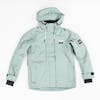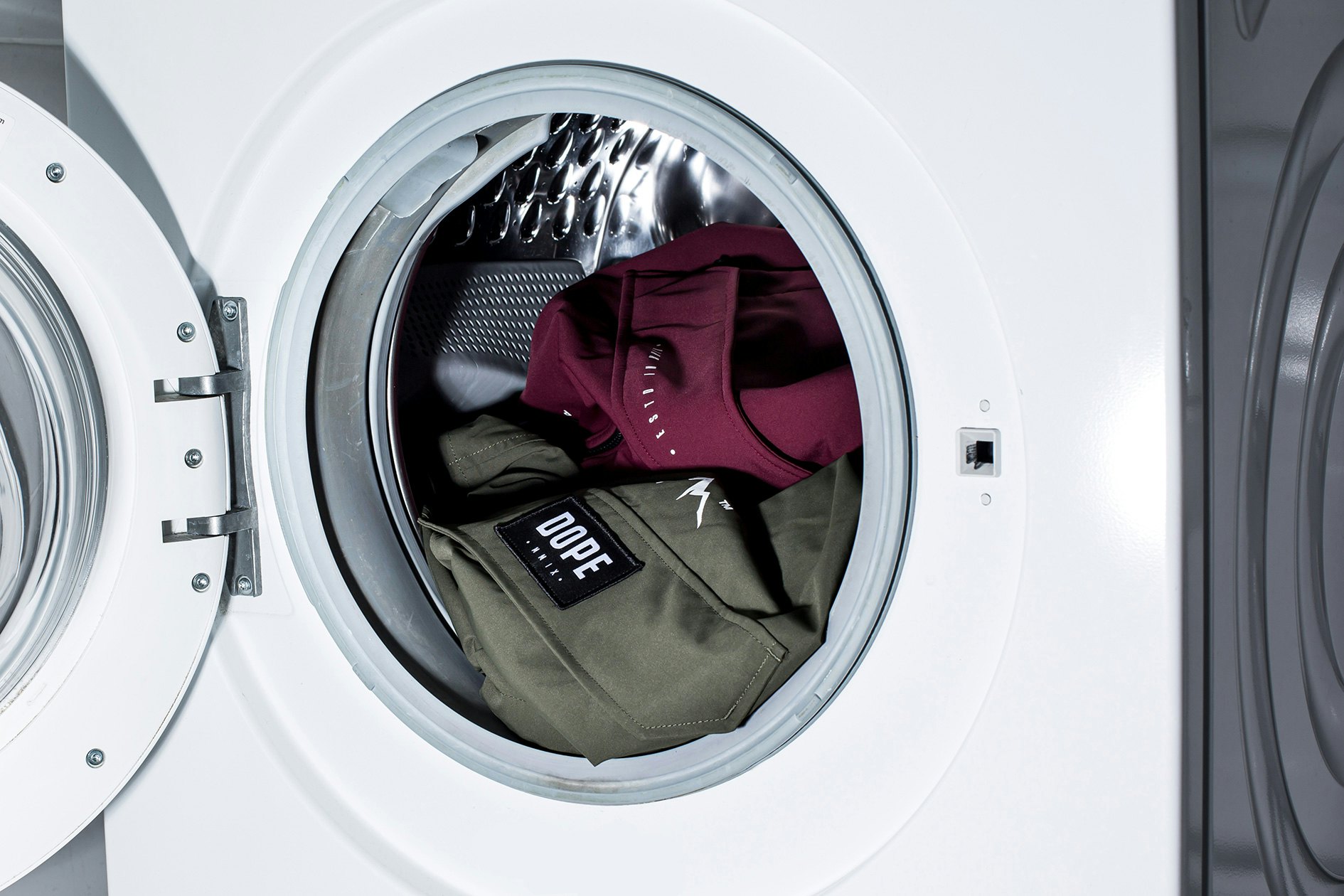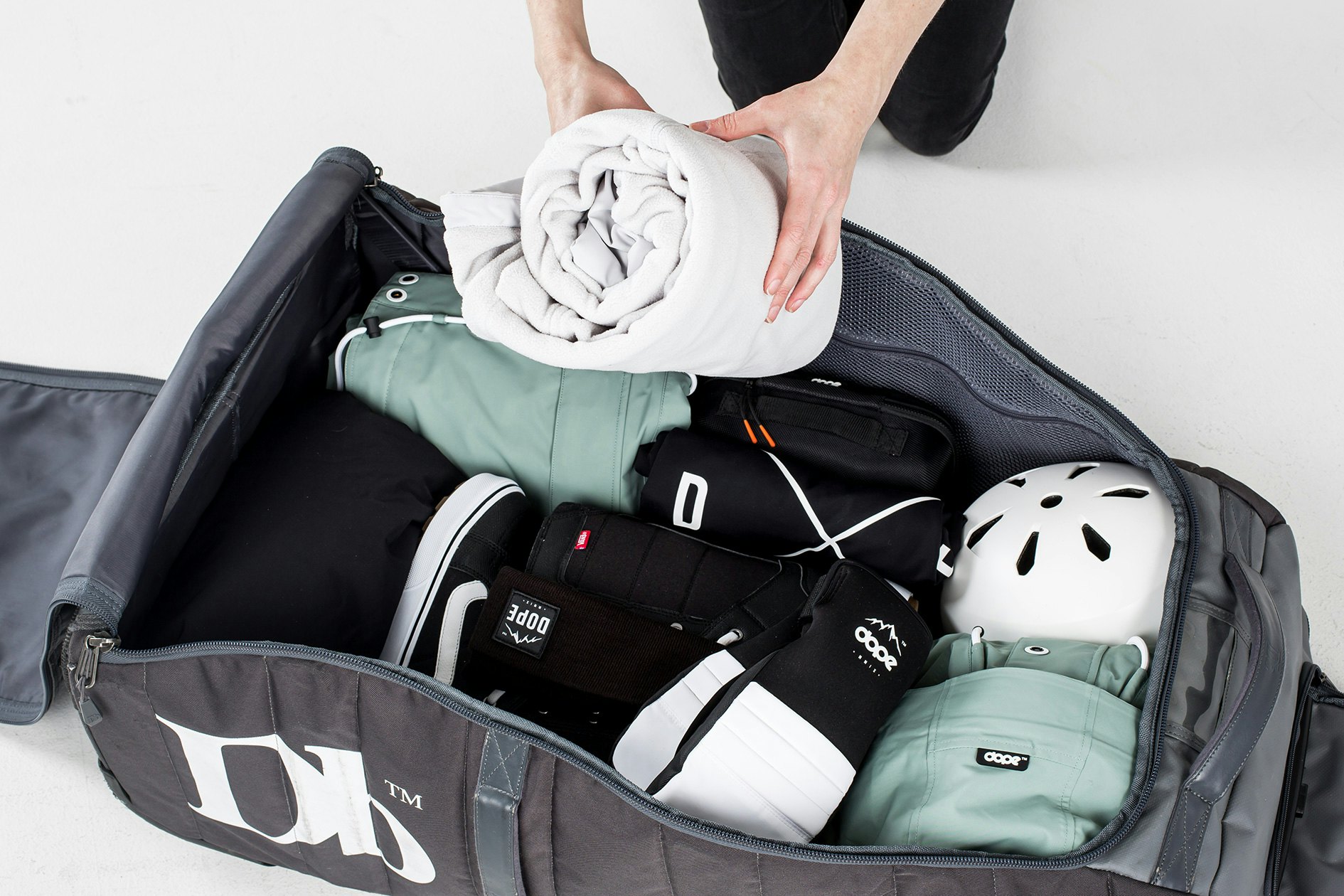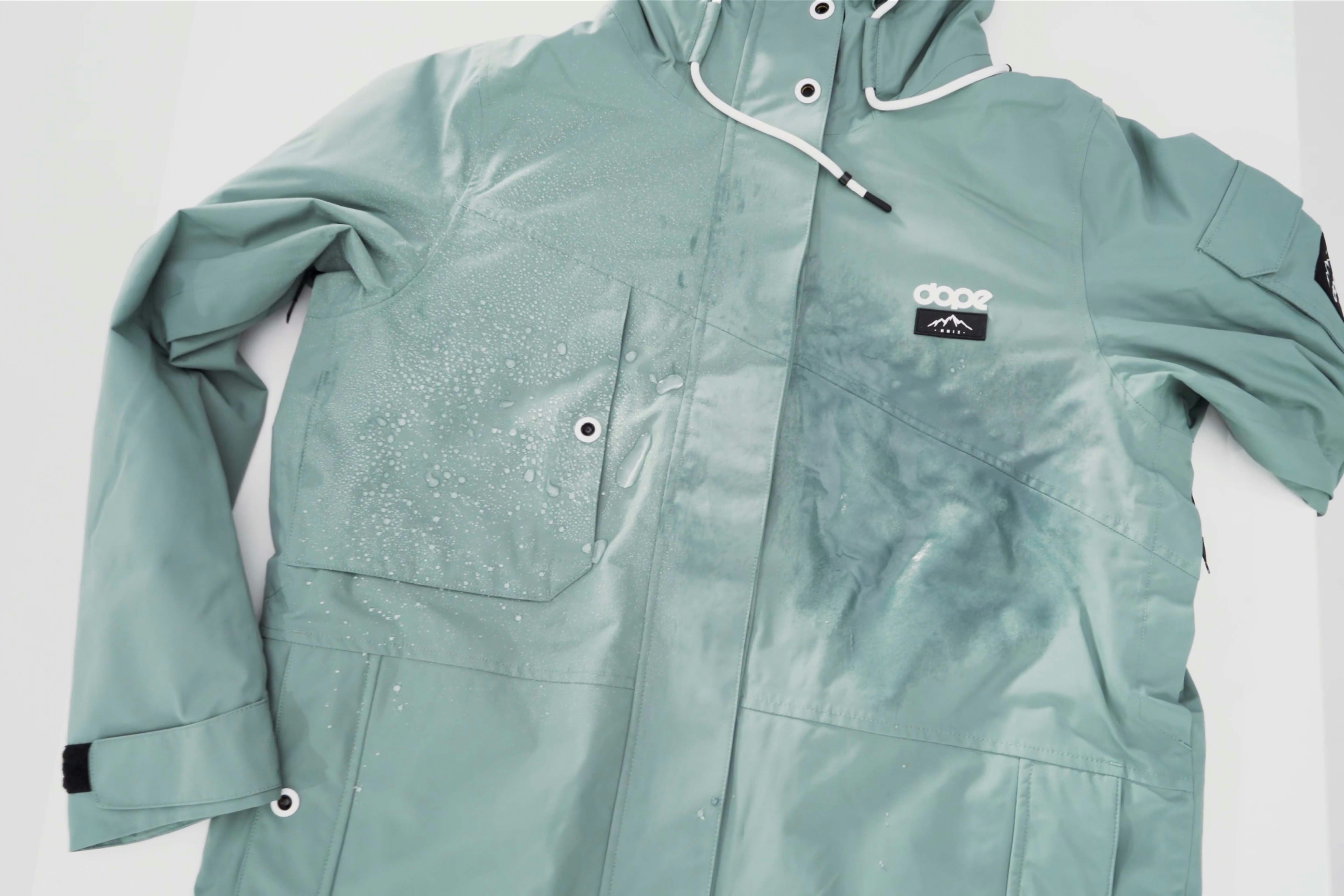Care guide for jackets & pants
If you’re looking for some tips, tricks, and advice on how to keep your jackets & pants in the best possible condition this season, then check out our handy guides.

FAQs
Yes, you can and in fact you should when it's dirty. Outside elements like oil, dirt and smoke can affect the performance of your snow gear. When snow gear is dirty, it tends to affect the DWR, waterproofness, and breathability.
Snow gear can be washed safely, but there are a few guidelines to follow. Handily, we have an in-depth guide that tells you everything you need to know!
Check our washing guide here!Waterproof fabrics are made up of laminated layers, and then usually treated with a water-repellent substance. The outer layer is usually polyester or nylon, and the under-layer is a polymerised waterproof membrane.
Washing on an intense cycle or a warm wash, or using certain types of detergents or products will damage the membrane, and may also remove or degrade the water repellent finish on the outside of the fabric.
So yes, sometimes, if done incorrectly, washing can hurt the waterproofing of an item. However, this is not a risk if you follow our wash-guide.
Check our washing guide hereMost waterproof membranes are made from PU (Polyurethane), PTFE (polytetrafluoroethylene) or TPU (Tetra Polyurethane). PTFE is heated, and then stretched quickly to form a microporous film, where the pores are 50 times smaller than the smallest water droplets, so water cannot pass through. But, when in its vaporised form, it can. That means that sweat exuded from the skin as steam can get out, but water can’t get in.
In PU/TPU membranes, a solid barrier is formed, which prevents water from passing through, but the material is also able to absorb water vapour molecules and let them out via diffusion. This is known as breathability (steam is let out) and waterproofing (water isn’t let in).
A Durable Water Repellent, or DWR, coating is applied to the outside of a garment, which causes water to bead up and roll off the surface, thereby preventing the fabric from becoming saturated and later damp and clammy. DWR also helps prevent staining & oil contamination, which improves water resistance and breathability as well as reducing the need for washings.
DWR is made from PFC compounds, or from more eco-friendly, fluorocarbon-free chemistry . Dope uses a high performance PFC free DWR chemistry coating on all its products as it is more sustainable and environmentally friendly. The reason why we moved away from PFC based DWR chemistry is because it’s byproducts are toxic and persist in the environment- a combination that makes it unacceptable despite its excellent performance. Regular wash and care are even more critical to keep the water repellency performance of PFC free DWR at good performance. You can check if it works properly following our how to check and re-apply DWR guide.
Check our DWR guide hereDWR are molecules that apply to the fibers, and the molecules "stand" like super fine “umbrellas” on the fibers. Abbreasion and dirt can make the umbrellas lay down which makes them perform less. Adding heat by tumble drying actually re-aligns all the tiny “umbrellas” to realign & stand up again.
We recommend a liquid non-toxic, biodegradable eco-friendly washing detergent. There are several types especially for sportswear and waterproof items that guarantee not to harm your item - however, it is most important to not use any bleach or softeners and you should be fine.
Skiing and boarding is sweaty work, so a light wash may not have totally gotten rid of all that funk. But not to worry, as there are some good ways to help this out. Firstly, turn your ski gear inside out so the lining is in the air, then hang outside in the sun. The UV will help kill bacteria to prevent smells from getting any worse. Then we’d recommend giving it a spritz with a deodorising spray. And then, if it’s still smelly, you can turn it the right way in, and zip it up, and throw some clothing odour absorbers inside it and leave it for a while. That should take care of the problem!
All Dope jackets and pants can and should go into the tumble dryer, but this is rather to re-activate the DWR than for the purpose of making it dry. Follow our wash guide to do this correctly.
For other brands or garments, check the care label before you take the decision to tumble dry.
Check our washing guide hereNo, but why would you want to? The heat from an iron can damage not only the DWR on the outside, but also the waterproof membrane underneath. And as most snow jackets and pants are polyester or nylon, a hot iron could even melt the fabric or make it look ‘shiny’ at the very least.
Some companies say that their DWR can be re-activated by a low-heat iron, and in this case, you need a barrier like a tea towel between the jacket and iron to make sure it doesn’t get damaged by the heat. But be careful because any dirt on the tea towel can contaminate and damage the DWR even more!
For Dope we recommend tumble drying to re-activate the DWR which is explained in our washing guide.
Check our washing guide hereThis is a tricky question at the best of times. Here we would like to start with explaining the difference between water repellency and waterproofing as in majority of cases it is the water repellent/DWR finish which fails and leads to water droplets/snow sticking to the surface of fabric giving the impression of failure of waterproofing, when actually it is the failure of “water repellent” finish.
Waterproofing failure is when the water actually gets through the outside of the garment to inside making the wearer’s skin/under layer wet. Waterproofing failure is rare.
If the waterproof membrane on the back-side of the shell is damaged, then it’s unlikely the jacket will ever be waterproof again. Usually when we get this question, people’s DWR coatings have worn off, in which case, yes, it is possible to add this level of protection back! Or even add more water repellency to a jacket you already have. There are many good options for re-applying DWR at home, one is Nikwax, other common alternatives are Grangers or Organotex. These are all PFC-free and easy to use.
We always want to know if you have a claim or complaint, this is how we can become better. Reach out to our CX team and they will be happy to help and find the best solution for your case.



